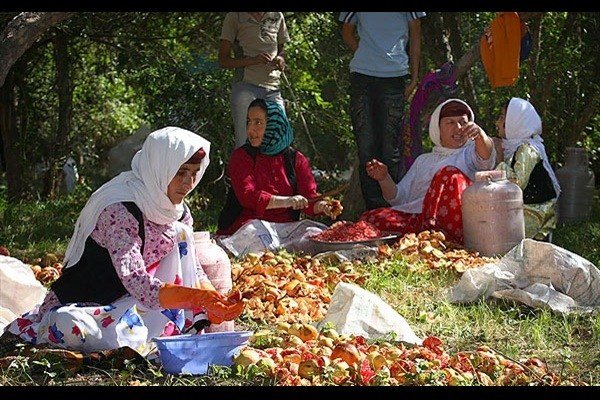MOU signed to support rural and nomad women for healthy food production

TEHRAN – A memorandum of understanding was signed here on Sunday in support of producing healthy food by rural and nomad women.
The MOU was singed between vice president for women and family affairs, Masoumeh Ebtekar, and head of the National Standards Organization, Nayereh Piroozbakht, at the place of the Ministry of Agriculture, Mehr reported.
Empowering women for producing healthy food, decreasing the use of agricultural toxics and optimum use of water resources are the key factors of women’s success in agriculture, Ebtekar stated.
Meanwhile, head of the Agricultural Research Organization, Eskandar Zand, said family agriculture makes up 70 percent of the world’s agriculture and women’s role is vital in family agriculture.
Today, the agriculture sector is divided into two categories of family agriculture and industrial agriculture, Zand explained, adding valuing the farmer is more important than valuing the agriculture itself and the world gives the priority to rural and nomad women.
A book on 23 years of experience of rural and nomad women’s capabilities was unveiled by the minister of agriculture and the VP for women’s affairs.
Great role of women in food security
Rural women take responsibility of providing 43 percent of the needed food in developing countries, therefore, the role of rural women in food security and decreasing poverty is essential, the temporary representative of the Food and Agriculture Organization of the United Nations (FAO) in Iran, Esther Kuisch Laroche said, speaking at the congress.
Nomad and rural women are usually neglected, however, they make of one fourth of the world population Laroche added.
Study shows the women who are earn money, use their income for the food security, clothing, education and health of their children, she added.
While 1991 statistics show that only about 8.5% of rural women are economically active, research and field observations indicate that the number is much greater.
Rural women play an active part in food and other crop production, fisheries and livestock, especially poultry raising.
In forestry, women are involved in the production and transplanting of seedlings.
Since income from agriculture is often insufficient for subsistence, rural women's nonagricultural activities, such as carpet weaving and other crafts, are important to household survival.
Although information on agricultural activities is not gender-disaggregated, case studies and observations show that rural women are engaged in various phases of crop production, including planting (particularly of rice), weeding, pest control, harvesting, processing and marketing.
Women also play an important role in livestock raising and dairy production and in the processing and marketing of fish. Activities vary by region and crop.
Increased farm mechanization has decreased women's part in planting operations, but has increased opportunities for employment in processing of food and animal products.
Most decisions related to food and other crops are made by men, although women sometimes participate in decisions on surplus production and the use of income from crops such as sugar beets, pulses and garden fruits.
Women and men share equally in decisions on poultry and women also have a say in decisions regarding cattle and, to a lesser extent, sheep.
Although, due to tradition, women have little decision-making power at the local level, elderly women have a special status and their opinions carry weight in household decision-making.
NM/MG
Leave a Comment